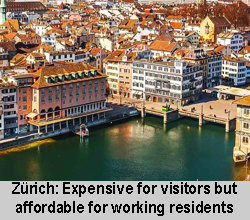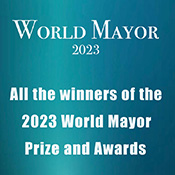FRONT PAGE
About us
  
ON OTHER PAGES
• Guide to richest and most expensive cities
• Most expensive cities
• Richest cities
• Most powerful cities
• Big Mac Guide
• Largest cities in the world (1 to 150)
• Largest cities in the world (151 to 300)
• A to Z to largest cities in the world
• Countries with the largest cities in the world
• Introduction to largest cities in the world
Women in US local government
World Mayors and politics
Voter turnout - an international comparison
Largest cities in the world and their mayors (2017)
Largest cities with women mayors (2017)
Capital cities and their mayors (2017)
Salaries of German mayors
Salaries of British mayors
Salaries of Japanese mayors
Mayors in Europe and their powers (2018)
Belgian Mayors (2018)
British Mayors (2018)
Canadian Mayors (2018)
French Mayors (2017)
German mayors (2018)
Italian mayors (2017)
Japanese mayors (2018)
Polish mayors (2017)
Spanish mayors (2018)
US mayors (2018)
|
|
 Highlights and summary Highlights and summary
• Swiss cities are expensive but residents enjoy strong purchasing power.
• The price of a cup of coffee varies from US$6.40 in Doha to $0.62 in Lagos.
• A Big Mac is most affordable in Hong Kong
June 2018: Zurich, Geneva, Oslo, Copenhagen and New York City are the five most expensive cities in the world, with Tokyo, Milan, London, Chicago and Helsinki completing the top ten. The ‘Prices and Earnings Survey’, conducted by the Swiss financial institution UBS every three years, measures how much people earn and how much the items in their average shopping basket cost. While Zurich and Geneva may seem expensive to visitors, the cities residents, because of high earnings, enjoy some of the highest purchasing power in the word. The world’s highest average earnings are enjoyed in Geneva, Zurich, Luxembourg, Los Angles and Copenhagen. For example in Zurich, the average office employee has to work only 13 minutes to be able to afford a Big Mac. A New Yorker has to toil for 15 minutes to pay for a hamburger, while in Nairobi, the city with the lowest purchasing power, the average resident has to spend more than two hours at work to be able to afford a Big Mac.
At US$6.40, the price of a cup of coffee is highest in Doha and, at $0.62, cheapest in Lagos. Cities where a simple cup of coffee cost more than $4.00 include Copenhagen ($6.25), Dubai ($5.70), Zurich ($4.98), Beijing ($4.42), Vienna ($4.35) and Paris ($4.13). A Londoner pays a relatively modest $3.88 for his or her morning latte. But it is worth remembering that UBS converted local currencies into US dollars, meaning that a strengthening local currency makes goods more expensive when paid in dollars. The opposite is true when the value of a local currency falls against the dollar, as happened in the UK after the Brexit referendum.
UBS carries out its ‘Prices and Earnings Survey’ every three years. In 2012, when the current format was established, Oslo, Zurich and Tokyo were the most costly cities in the world. Cities, where life has become expensive – at least if expressed in US dollars – include Milan (up from rank 18 to 7 in 2018), London (from 10 to 8), Chicago (from 20 to 9), Auckland (from 25 to 13) and Seoul (from 37 to 16). Cities where visitors received more value for their bucks include Tokyo, Stockholm, Vienna, Munich, Rome and Barcelona.
The most expensive cities
Zurich, Geneva and Oslo are, according to the UBS research, the most expensive cities in the world. It is estimated that in Geneva the average family of three spends the equivalent of US$700 on food every month. A similar basket of items would only cost $480 in New York City, $426 in Paris, $393 in London or $353 in Berlin. But while almost five dollars for a cup of coffee in Zurich seems expensive, the most expensive cappuccino is served in Copenhagen. Romans pay less than one dollar for their morning espresso. MORE
The richest cities
Zurich and Geneva may be globally the most expensive cities, but their working residents are compensated with the highest salaries and wages. A construction worker in can expect to earn the equivalent of almost US$70,000 a year, while the same job in London pays only $40,000. In New York City construction workers earn on average $31,000 a year. Construction workers in Lagos, Nairobi and Cairo earn less than $2,000 a year. MORE
The most powerful cities
Los Angeles is ranked first in the purchasing power index due to a combination of high average earnings and relatively low prices. The same applies to Miami, while the Swiss cities of Zurich and Geneva are ranked in the top-5 because of high average earnings, which compensate high prices. Apart from Luxembourg no other European city makes the top-ten in the UBS purchasing power index. Munich is placed 11th, Frankfurt 12th, Berlin 15th and Vienna 16th. Due to relatively high prices, London is ranked below such cities as Dublin, Tokyo and Stockholm. MORE
Big Mac Guide
The McDonald’s Big Mac hamburger is sold in some 120 countries around the world. Since it was first introduced in the US in 1967, it has become a truly global product. With a few exceptions, a Big Mac is a Big Mac wherever in the world it is bought. But while in most Western countries the hamburger is an inexpensive convenient meal, for consumers in developing it is often a luxury compared to local dishes. People in cities such as Hong Kong, Tokyo, Zurich or Los Angeles need to work less than 15 minutes to be able to afford a Big Mac, while the cost of the McDonald’s hamburger in cities like Istanbul, Jakarta or Mexico City is higher than the average hourly wage. In Nairobi, hungry residents need to work for more than two hours to be able to pay for a Big Mac. MORE
Methodology
Between January and April of 2018, UBS gathered more than 75,000 data points on prices and earnings from 77 cities worldwide.
To analyze prices UBS created a standardized basket of 128 goods and services, which replicates the spending and consumption of a typical three-person European family. The researchers were aware that consumer habits and preferences vary greatly from country to country, continent to continent. If products were not available in some cities, or deviated too far from our parameters, local representative substitutes were sometimes used. To iron out any inconsistencies, individual items were weighted accordingly. The basket of goods and services accounts for almost 80 per cent of the EU’s harmonized index of consumer prices (HCIP) this year, so we can explain the consumption habits of a European family quite well. That figure is 52 per cent when compared with the US CPI basket and 65 cent compared with the Singaporean Household Expenditure basket. Changes in consumer habits stemming from technological developments were accounted for by updated specifications for electronic products. The iPhone 6 from 2015, for instance, was replaced by an iPhone X.
For the study's second main ingredient, earnings, UBS created a reference profile of 15 professions to represent the structure of the working population in Europe. The research included profiles of workers of varying ages, family status, work experience and education levels.
Prices and Earnings offers answers to questions such as "Do I live in an expensive city?" and "What are my wages actually worth compared with elsewhere in the world?" But these answers aren't always straightforward and have their limitations. For example, UBS only considered rented apartments in our housing heading. In every city, housing is the largest single expenditure and eats away, on average, 23 per cent of a person's disposable income. If a person's living space is owned, that number can drop toward 0, which would have a large impact on spending. In addition, heating/air conditioning costs are very difficult to calculate. In many cities, renters have no insight into the individual kWh price of oil, gas and electricity, making it impossible for us to consider this cost in our study.
Cities such as Zurich, Geneva and Hong Kong have basic private medical insurance that is obligatory, regardless of income. It is not a part of the social security system and the price of it is not deducted from salaries. So social security contributions only reflect public social contributions, not necessarily all social contributions made by employees. This also limits the comparability of these cities with others.
Last, the research only considered the most common jobs in Europe for our wage basket. The European labour force is different from the North and South American, the African, Australian and Asian one. The composition of primary, secondary and tertiary sector varies greatly. The focus on the European labour market biases the study toward jobs in the tertiary sector.
|





